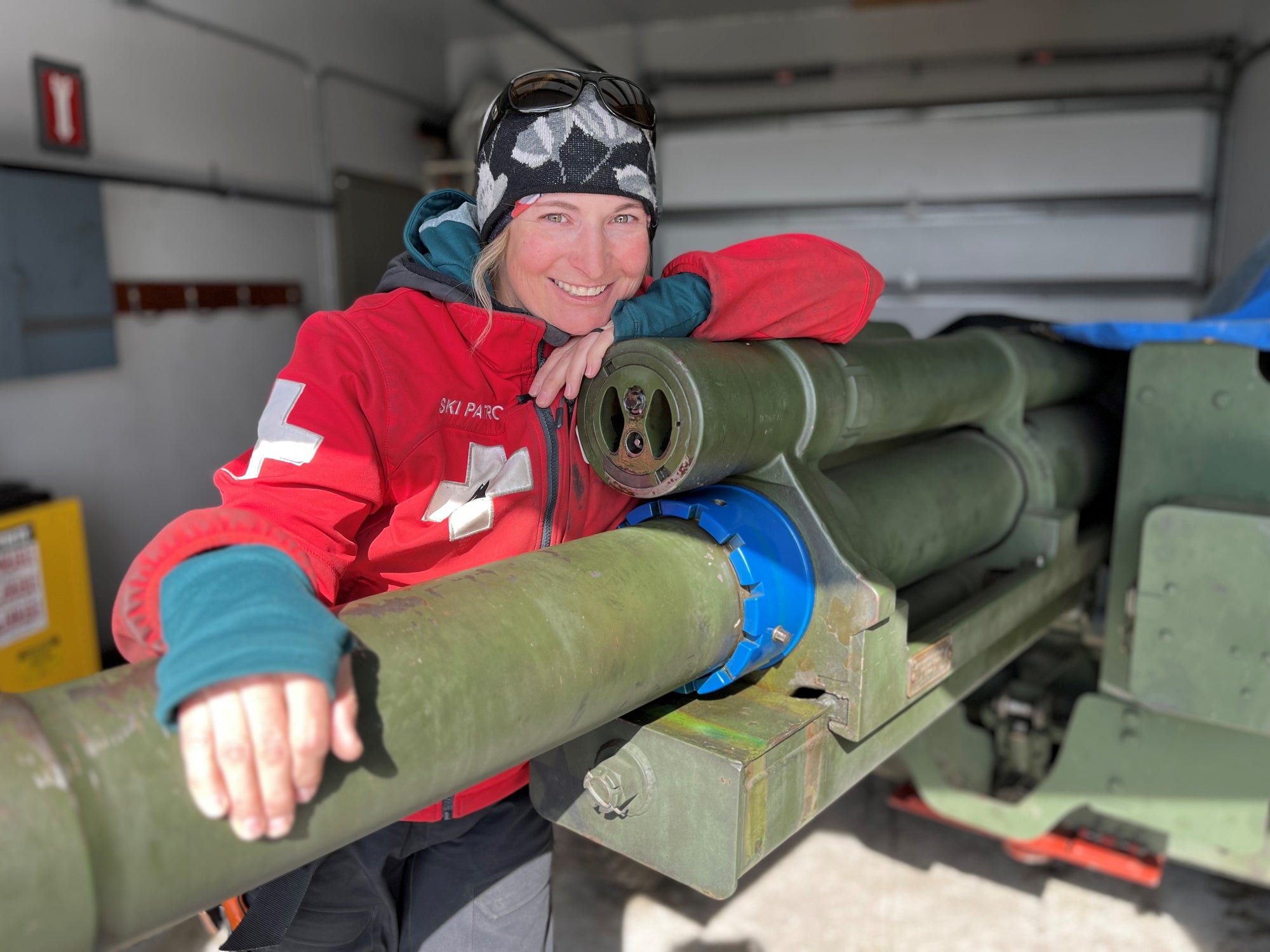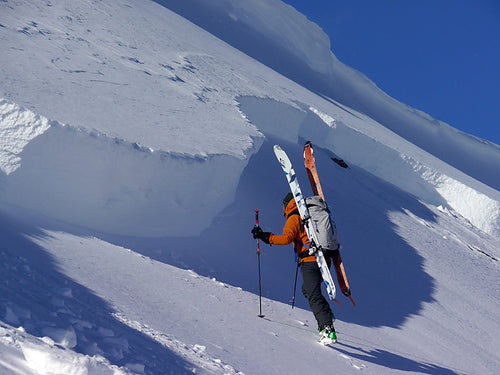Jen Reddy is an artist, avalanche educator, and search and rescue volunteer in Jackson, Wyoming. Which means she helps people on their absolute worst days.
[Note: This is part two of a series called The Invisible Hands of Avalanche Work, a five-part series that’s brought to you by Flylow and the American Avalanche Association. The point of these stories is to get to know some of the hard-working, behind-the-scenes folks who conduct the critical avalanche work that keeps the rest of us safe.]
Not that she has much spare time, but somehow, Jen Reddy manages to do a lot outside of her normal 9-to-5 job as the Pro Education Manager for the American Avalanche Association. She’s a graphic artist, she teaches avalanche education courses for the American Avalanche Institute, and for the past eight years, she’s been a volunteer with Wyoming’s Teton County Search and Rescue. We spoke to her about what it’s like dropping everything to go help someone in need in the backcountry.
I grew up ski racing on the East Coast. I went to a race in Colorado and it snowed a ton and I learned to ski powder. That was the end of my ski racing career. I went to CU Boulder and set up my schedule so I could ski four days a week. I was doing a lot of rock climbing and was introduced to ski mountaineering. I discovered this blend of climbing up semi-technical mountains and skiing down them.

I’ve done all the ski-bum jobs: I was a barista in Breckenridge, I answered the night phone at the hospital in Jackson so I could ski all day. I’ve been a heli ski guide in AK, a ski model. I’ve done it all.
It’s a long story. But in 2015, I had a good friend in Colorado who sustained life-altering injuries falling in an ice climbing accident off Vail Pass. The search and rescue individuals saved his life. I was inspired to be able to do the same thing for our community in Jackson. I’ve been a high level recreationalist for a long time, I had my EMT license, and I know this community, so I felt confident that I had a broad range of skills and would be able to move effectively in the backcountry.
You don’t need to be a 5.14 lead climber or a professional-level skier to be a search and rescue volunteer. What we look for more than anything else is someone who’s going to be a team player. You can’t always be a hero dangling on the end of the rope; sometimes you have to be the one getting sandwiches.
You’re showing up for people on their worst day. You make it a little bit easier for them.
A lot of people don’t know that we’re not just sitting around the hangar waiting for a 9-1-1 call to come in. We’re doing our day-to-day jobs. That might be working in the emergency room or working at a desk. We get a phone call and we drop everything to get to the hangar and respond.

My teammates are amazing human beings. They’re so selfless. They’re willing to put their own day-to-day needs and responsibilities on hold to go help someone in need.
These rescues don’t just weigh on you physically but emotionally as well. It’s really hard seeing these things. The survivors are the ones who are so impacted. Your general wilderness first aid training doesn’t prepare you to help those individuals who witnessed a backcountry accident.
We’ve set up an incredible peer-to-peer support system to help first responders across our community, where we offer a listening ear to anyone who might need assistance following a difficult call or compounding calls. We partner with local therapists. Being able to call someone to go for a walk and chat about what’s been on your mind and how you’re dealing with it and having people who are trained in how to listen makes a big difference.
In my own trajectory as a backcountry skier, I had a big ah ha moment. I realized it’s not just that I could blow out my knee, I could die doing this. That set me down this path of how do I make better decisions? Teaching, especially newer individuals to backcountry skiing, can help set people up for a lifelong pursuit of skiing or riding in the backcountry and doing it responsibly.
I was always creative as a kid. I would run around with a fistful of crayons. But I let that go until the winter of 2016. I took a winter off to travel and put my head on straight and I was doing these drawings that I’d post on Instagram, and people were like, ‘Can I buy that?’ It was an accidental path that I followed to start creating art. What I really enjoy doing is illustrating instructables, like how to tie knots or how to rig a haul system. Art can be beautiful and useful.

Being a good citizen in the backcountry is more than just making good decisions about snow and terrain choices. You don’t drop in on a group below you. You create a culture of being friendly and offering assistance to other parties that might be in need. Be more thoughtful about where, when, and how we’re accessing snow.





